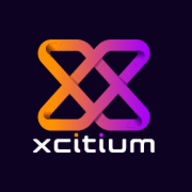

Microsoft Configuration Manager and Comodo Patch Management compete in system management and patch deployment. Microsoft Configuration Manager has an advantage in comprehensive system management, while Comodo Patch Management is more appealing for security-focused organizations.
Features: Microsoft Configuration Manager offers system management capabilities, centralized control for updates and configurations, and seamless integration with Microsoft products. Comodo Patch Management provides automated patch deployment, threat detection, and efficient vulnerability resolution.
Ease of Deployment and Customer Service: Microsoft Configuration Manager requires significant configuration time and specialized IT knowledge, offering extensive integration support. Comodo Patch Management has a straightforward deployment process, intuitive design, and dedicated customer support for troubleshooting.
Pricing and ROI: Microsoft Configuration Manager typically has higher initial setup costs but offers substantial long-term ROI for organizations utilizing its full system management capabilities. Comodo Patch Management involves lower upfront costs, providing immediate value through security and patching efficiency, with ROI achieved via enhanced security and reduced vulnerabilities.
| Product | Market Share (%) |
|---|---|
| Microsoft Configuration Manager | 11.0% |
| Comodo Patch Management | 0.5% |
| Other | 88.5% |


| Company Size | Count |
|---|---|
| Small Business | 20 |
| Midsize Enterprise | 13 |
| Large Enterprise | 64 |
Comodo Patch Manager gives administrators and MSPs granular control over the deployment of updates to operating systems and 3rd party applications on network endpoints. Featuring a centralized, easy to use interface, Comodo Patch Manager allows administrators to:
Microsoft Configuration Manager streamlines IT management with features such as software deployment, patch management, and automation, centralizing operations for Windows environments. Integration with Microsoft products allows efficient oversight of workstations and servers.
Microsoft Configuration Manager provides comprehensive IT management, offering software deployment, patch management, and application pushing. Automation reduces manual tasks, ensuring consistency across systems. Centralized management enables standardized OS deployments, application updates, and configuration integrity. Integration with Microsoft products facilitates seamless operations, while hardware and software inventory, compliance reporting, and remote control functions enhance IT management. Users seek improvements in application deployment for those without deep scripting knowledge and desire better WSUS control, PowerShell and Intune integration, Linux compatibility, and user interface enhancements. Performance improvements are requested for remote user management and third-party application support.
What features enhance Microsoft Configuration Manager?Microsoft Configuration Manager is widely implemented in organizations to manage Windows workstations and servers. It is essential for deploying operating systems and applications, managing software updates, and conducting hardware and software inventories. The tool is crucial for endpoint and configuration management, ensuring compliance, and automating processes like patching and vulnerability management. Industries such as finance, healthcare, and education rely on Microsoft Configuration Manager to keep systems secure and operational, adapting it to address their specific needs and challenges in maintaining diversified IT environments.
We monitor all Patch Management reviews to prevent fraudulent reviews and keep review quality high. We do not post reviews by company employees or direct competitors. We validate each review for authenticity via cross-reference with LinkedIn, and personal follow-up with the reviewer when necessary.